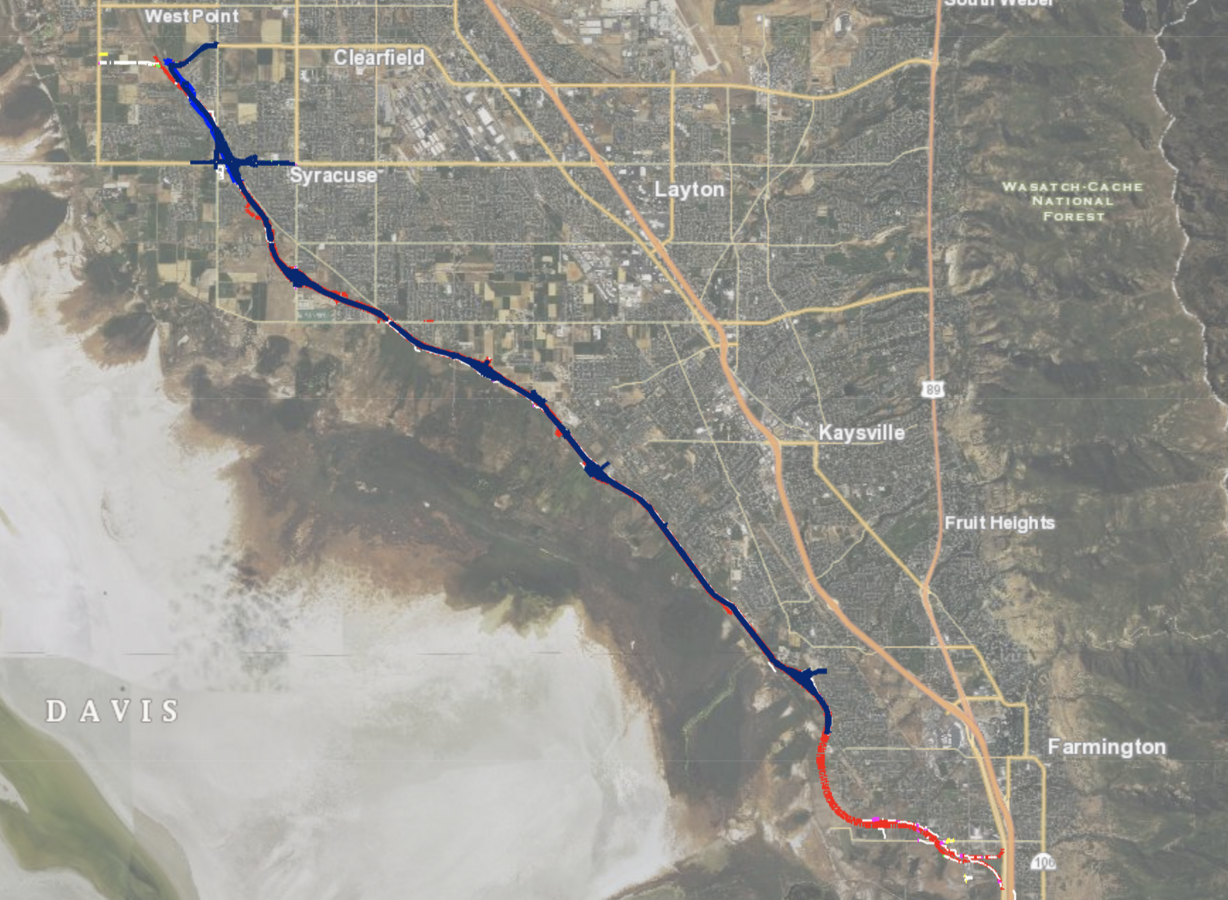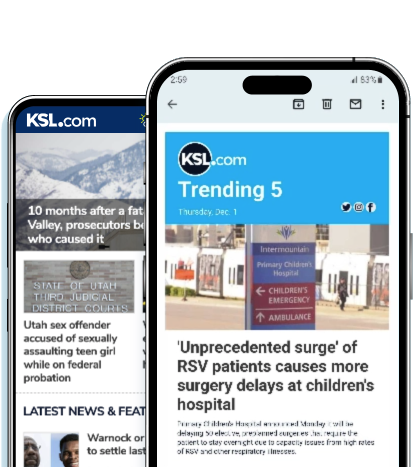Estimated read time: 6-7 minutes
This archived news story is available only for your personal, non-commercial use. Information in the story may be outdated or superseded by additional information. Reading or replaying the story in its archived form does not constitute a republication of the story.
LAYTON — Considering that the thought of the West Davis Highway has been on the minds of Utah transportation officials since at least the early 1960s, and maybe even longer than that, Carlos Braceras said it would be impossible to name every single person that has worked on making the highway happen.
"I would say thousands of people have worked to get us to the point where we're at right now, and it's probably thousands and thousands of people," said Braceras, the executive director for the Utah Department of Transportation, as he stood at a podium in the area where Utah's newest highway will soon run through.
Now, after all those decades of discussion, debates and planning, work is finally underway on what state officials call the biggest highway project in the state since 2012.
High-ranking members of the Utah Legislature joined Braceras, local leaders and other personnel at a spot in Layton on Tuesday to officially break ground on a new 16-mile, four-lane highway to connect I-15 near Glovers Lane in Farmington to the future extension of state Route 193 in West Point.
The West Davis Highway, or state Route 177, will feature interchanges at I-15/Legacy Parkway in Farmington, 950 North in Farmington, 200 North in Kaysville, 2700 West in Layton, 2000 West in Syracuse, and Antelope Drive in Syracuse.
It's a project that state leaders and transportation officials said they believe will help alleviate traffic headaches as the population of the northern portion of the Wasatch Front continues to grow. In fact, Braceras said it's expected to absorb about 30% of traffic off I-15 and other roadways in the area — about the same level of impact as an extra lane to the freeway — by the time it opens, which is scheduled to be in 2024.
"It's a game-changer for Davis and Weber counties and all of northern Utah altogether," added House Majority Whip Mike Schultz, R-Hooper. "There are so many people who will be on the West Davis Corridor, and it'll take people off of (U.S.) Highway 89, it'll take people off I-15, and it really helps complete the transportation system as a whole. So, it does have a huge impact on the quality of our lives for all the citizens of northern Utah."

The massive project also includes 10 miles of new trails that will connect with regional trails in western Davis County used for biking, walking and running. UDOT officials added that about 1,100 acres of wetlands near the Great Salt Lake will also be preserved to lessen any impact on the environment.
While the thought of the project dates back at least 60 years, it's also taken a lot of effort to coordinate the project in more recent history. UDOT's initial project studies began about two decades ago, and an environmental impact study started in 2010. The final design will have the "same kind of look and feel" as the Legacy Parkway, also in Davis County, UDOT officials said.
A large reason why it took so long for the project to come together is that there was an extensive public process to figure out the logistics of the highway.
"Every inch of the parkway was discussed by the citizens, in terms of the location of interchanges, the width of the facility, how high the facility should be, where the active transportation, the trail systems should be and what it should tie into," Braceras explained. "(These are) their cities, and it's going to be here for a long time, so they cared a lot and we really cared to listen to them."
Utah's growth is the main reason why local leaders and transportation officials argued the project became increasingly necessary. The Beehive State was officially the fastest-growing state in the country during the 2010s, according to the Census Bureau. More detailed information about towns and cities expected later this year will show how much of that growth came in Davis County — the state's third-most populated county.
It is clear, however, that Davis County experienced significant growth over the past 10 years. The bureau estimated the county's population in 2019 reached 355,481, which was nearly 50,000 more people than the 2010 Census count. That's just the beginning.
"Here in western Davis and Weber counties, the number of households is expected to increase by 65% by 2040," Braceras said. "We need to have infrastructure so that our communities can grow and create the communities of their dreams."
Senate President Stuart Adams, R-Layton, agreed. He called Tuesday's ceremony a "great, great day for Utah" because of how the highway will address the current and future transportation needs associated with the county's growth.
That's not to say everyone was as enthusiastic about Tuesday's groundbreaking. Some residents in the area said Tuesday's ceremony was "bittersweet" because the highway will help the population growth but will also change the atmosphere of the quiet portion of the county. The future highway will run through plots of land near homes across the 16-mile stretch, including through the backyard of Paul Battista's home in Layton.

Battista said he understands why the project is needed, and that there really isn't anything that can be done about it now. He's mostly concerned that the new highway will start off with just small vehicular traffic — which he said he was told it would be — but then be treated the same way as Legacy Parkway was in recent years. UDOT approved a speed limit increase on that highway in 2019 and the state Legislature removed a ban on large trucks last year.
"I really hope the powers that be here are honest with us," he said, sitting on a stoop outside his home. "(We're) really not interested in having a bunch of 18-wheelers, dump trucks and all that stuff and all that noise behind us."
Claire Allred, also of Layton, said she felt the same way about the highway, which will run close to her property. It's a project she and her family knew would come one day so they were reluctantly prepared for it.
"It's always sad to see those nice open spaces — like we can see Antelope Island from our property — so it'll be kind of sad to have that kind of marred by a thick road," she said.
As construction begins and will continue for the next couple of years leading up to the new highway, Battista said he'll try to focus on the positives that'll remain in the neighborhood even after the new highway opens.
"We'll still have the views," he said.
UDOT officials said residents, commuters and those who use the regional trails in western Davis County should anticipate construction, detours and off-and-on closures in the region beginning this week and then over the next couple of years as the highway is built. The agency set up a website with current closures and other details about the project at westdavis.udot.utah.gov.
Contributing: Dan Rascon, KSL TV









